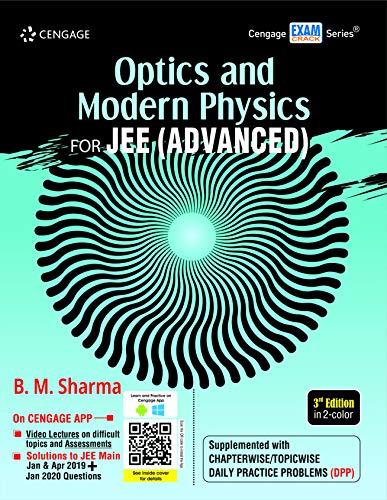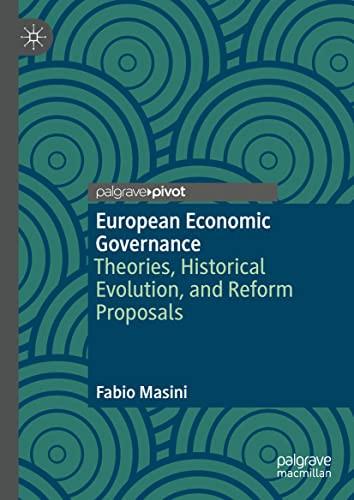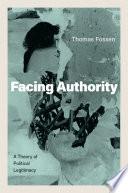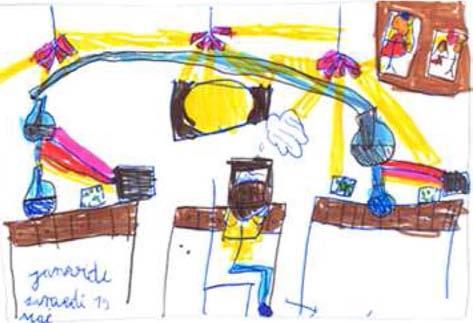Fundamentals of Digital Logic with VHDL Design 4th Edition
Stephen Brown
https://ebookmass.com/product/fundamentals-of-digital-logic-with-vhdldesign-4th-edition-stephen-brown/
ebookmass.com
Optics and Modern Physics for JEE (Advanced), 3rd edition
B. M. Sharma
https://ebookmass.com/product/optics-and-modern-physics-for-jeeadvanced-3rd-edition-b-m-sharma/
ebookmass.com
Twisted Emotions (The Camorra Chronicles Book 2) Cora Reilly
https://ebookmass.com/product/twisted-emotions-the-camorra-chroniclesbook-2-cora-reilly/
ebookmass.com
European Economic Governance: Theories, Historical Evolution, and Reform Proposals Fabio Masini
https://ebookmass.com/product/european-economic-governance-theorieshistorical-evolution-and-reform-proposals-fabio-masini/
ebookmass.com
Facing Authority: A Theory of Political Legitimacy Thomas Fossen
https://ebookmass.com/product/facing-authority-a-theory-of-politicallegitimacy-thomas-fossen/
ebookmass.com
First Raise a Flag: How South Sudan Won the Longest War But Lost the Peace Peter Martell
https://ebookmass.com/product/first-raise-a-flag-how-south-sudan-wonthe-longest-war-but-lost-the-peace-peter-martell/
ebookmass.com
Elsevier
Radarweg29,POBox211,1000AEAmsterdam,Netherlands TheBoulevard,LangfordLane,Kidlington,OxfordOX51GB,UnitedKingdom 50HampshireStreet,5thFloor,Cambridge,MA02139,UnitedStates
Firstedition2016
Copyright © 2016ElsevierB.V.Allrightsreserved.
Nopartofthispublicationmaybereproducedortransmittedinanyformorbyany means,electronicormechanical,includingphotocopying,recording,orany informationstorageandretrievalsystem,withoutpermissioninwritingfromthe publisher.Detailsonhowtoseekpermission,furtherinformationaboutthePublisher’s permissionspoliciesandourarrangementswithorganizationssuchastheCopyright ClearanceCenterandtheCopyrightLicensingAgency,canbefoundatourwebsite: www.elsevier.com/permissions.
Thisbookandtheindividualcontributionscontainedinitareprotectedunder copyrightbythePublisher(otherthanasmaybenotedherein).
Notices Knowledgeandbestpracticeinthisfieldareconstantlychanging.Asnewresearchand experiencebroadenourunderstanding,changesinresearchmethods,professional practices,ormedicaltreatmentmaybecomenecessary.
Practitionersandresearchersmustalwaysrelyontheirownexperienceandknowledge inevaluatingandusinganyinformation,methods,compounds,orexperiments describedherein.Inusingsuchinformationormethodstheyshouldbemindfuloftheir ownsafetyandthesafetyofothers,includingpartiesforwhomtheyhavea professionalresponsibility.
Tothefullestextentofthelaw,neitherthePublishernortheauthors,contributors,or editors,assumeanyliabilityforanyinjuryand/ordamagetopersonsorpropertyasa matterofproductsliability,negligenceorotherwise,orfromanyuseoroperationof anymethods,products,instructions,orideascontainedinthematerialherein.
ISBN:978-0-444-63638-6
ISSN:0922-3487
ForinformationonallElsevierpublications visitourwebsiteat https://www.elsevier.com/
Publisher: JohnFedor
AcquisitionEditor: KathrynMorrissey
EditorialProjectManager: JillCetel
ProductionProjectManager: VijayarajPurushothaman
CoverDesigner: VictoriaPearson
TypesetbySPiGlobal,India
R.Tauler(5,101),InstituteofEnvironmentalAssessmentandWaterResearch (IDÆA)SPANISHCOUNCILOFSCIENTIFICRESEARCH(CSIC),Barcelona, Spain
J.A.Timlin(381),SandiaNationalLaboratories,Albuquerque,NM,UnitedStates
L.Tits(551),FlemishInstituteforTechnologicalResearch(VITO),RemoteSensing Unit,Boeretang200,BE-2400Mol,Belgium
A.Ulrici(613),UniversityofModenaandReggioEmilia,ReggioEmilia,Italy
E.Wetherley(551),UniversityofCalifornia,SantaBarbara,CA,UnitedStates
W.Windig(53),EigenvectorResearchInc.,Manson,WA,UnitedStates
Preface Thisbookdealswithwaysandmeanstoresolvespectralmixtures,alongstandingbuttopicalissuethatistackledinmanyresearchfields,withan unlimitednumberofpossibleapplications.Inchemistry,spectralmixtureresolutioninvestigatessituationswherethespectralsignaturesofasampleresult fromthesuperpositionofthevariouschemicalsormaterialscomposingit,as observedinprocessspectroscopyorhyperspectralimaging.Morebroadly, resolvingaspectralmixtureisaninverseproblemthatisaddressedindifferentwaysinchemistryandinthedifferentfieldsofscienceandtechnology. Thishasledtothedevelopmentofawealthofmethods.
Spectralmixtureresolutionremainsahotissueinchemometricsstatistics orsignalandimageprocessing.However,thediversityofmethods(multivariatecurveresolution,blindsourceseparation,linearunmixing,etc.)canbea seriousimpedimenttowiderunderstandinganddisseminationofthespectral mixtureproblem.Bytakingamulti-angleandcross-disciplinaryapproach, thisbookhastheambitiontoturnthislimitationintoanassetandtoprovide acomprehensiveandcomprehensibledescriptionofthecurrentstateof theart.
Thebookismulti-authored,writtenasacollectionofindependentchapters thatprovidedifferentperspectivesandapplications.Expressedaltogether, theseperspectivestranslateintoarealinterplaybetweenthechapters.Basic conceptsandmainmethodsarepresentedinthefirstpartofthebook,whereas thesecondpartismoreorientedtowardapplicationsinchemistryandremote sensing.Somechaptersarewrittenastutorials,othersarereviews.Overall, thebookpresentsanextensivebibliographywhichisincomplete— consideringtheamountofscientificliteratureonthesubject—butgoodlist tostartwith.
Writtenbyinvitedauthorsthatarerecognizedexpertsintheirfield,the bookisaddressedtograduatestudents,researchers,andpractitionersinanalyticalscience,emphasizingapplicationsdealingwithanytypeofspectral data.Somebackgroundindataanalysis(chemometrics,statistics,signalor imageprocessing,etc.)andknowledgeofthebasicsoflinearalgebrawillhelp readability.However,eachchapterwasmeanttocontainenoughinformation tobe,byitself,sufficientandtobereadindependentlyoftheotherchapters.
Preface
Lastly,Iwouldliketoexpressmygratitudetoalltheinvitedauthorsthat haveacceptedtocooperateandcontributedtothisbook,andtothenumerous peoplewho,onewayoranother,wereinvolvedinthisproject.
CyrilRuckebusch Lille,January2016
Foreword Thetopicofthisvolumeis,ofcourse,veryinterestinganditistherighttime foritspublicationasarapidlygrowingnumberofresearchersrelyonthe methodsdescribedherefortheanalysisoftheirdata.Verylikelythisnumber willincreasesignificantlyinthenearfuture.
Allworkpresentedheredealswithaseriesofmeasuredspectra,andthe goaloftheanalysesistheresolutionofthiscollectionofspectraintotheproductofcontributionsofthecomponentsintermsoftheirconcentrationsand theirspectralresponses.Thetaskis,insomeways,bothsurprisinglysimple andsurprisinglydifficult.
Allanalysesarebasedonthemodelthattheoverallsignalataparticular wavelengthorchannelisthesumoverthecontributionsofallcomponents whereeachcomponentcontributionistheproductofitsconcentrationtimes itssignalforunitconcentration.Thisismostclearlyrealizedinsolution absorptionspectroscopywhereBeer–Lambert’slawreigns;ateachwavelengththeabsorptionisthesumovertheproductsofthecomponentconcentrationstimestheirmolarabsorptivityattheparticularwavelength.Itis, therefore,notsurprisingthatmostmethodspresentedinthisvolumehave beendevelopedfortheresolutionofseriesofabsorptionspectra,typically anHPLCchromatogramequippedwithadiodearraydetector.Thisvolume demonstratesthatthemethodologieshavefoundmuchwiderapplication. However,thefollowingexplanationswillbebasedonthelanguageofabsorptionspectroscopy.
Eq. (1) describestherelationshipfortheabsorptionreadingofspectrum i measuredatwavelength j, Di, j isthesumovertheproductsofconcentration ofspecies k, Ci,k,timesitsmolarabsorptivityatwavelength j, Ak, j:
TheEquation (1) canmostconvenientlybewrittenasamatrixequation (Eq. 2) D ¼ CA (2) where D containsrow-wisethespectratakentypicallyduringaprocess,itis known;thematrix C containstheconcentrationsofthecomponentsand A containstheirspectraorresponses.Thesematricesareunknownandthe goalistodeterminethem.Itisusefultorepresentthesituationgraphically:
Canadditionalconstraintsbeapplied?
(Chapters 3, 14, 17,and 18)
Nonnegativityoftheelementsofthematrices C and A istheuniversally appliedconstraint.Rotationalambiguitycanbereducedoreveneliminated altogetherbyapplicationofotherconstraintsorassumptions,suchasmaximumsmoothnessofordissimilaritybetweentheresults.
WhatifthesignalisnotstrictlyfollowingEqs. (1)and(2)?
(Chapter6,allimagechapters)
Eqs. (1)and(2) describetheidealcaseoflinearsignalcontribution;quite often,thisisnotstrictlythecase,anditcertainlyisonlyanapproximation inhyperspectralimages.Thisdoesnotrendertheanalysisirrelevant;theresult isanapproximationandoftenaveryusefulone.Chapter6specifically exploresthepossibilityofanonlinearrelationshipbetweencomponent concentrationandsignal.
Whatifthedatasetishuge?
(Chapters 9, 12,and 13)
Wavelettransformationisanoptionforthereductionofthesizeoftheoriginaldatamatrix D.Othercorrectionslikebaselinesubtraction,etc.,canalsobe useful.
Canthespatialresolutionbeimproved?
(Chapter15)
Hyperspectralimageshaveacertaingivenspacialresolution;surprisingly,it canbeimprovedbycleveralgorithms.
Howwidelycanthemethodsbeapplied?
(Chapters 11 and 16)
Therearetwochaptersthatreportontheapplicationofthemethodspresented hereinverydifferentfieldsofchemicalresearch.
Aretheresultsqualitativeorquantitative?
(Chapter2)
Thetypicalresultofmostanalysespresentedhereisasetofconcentration profiles/distributionsandresponsevectors/spectra.Theycanberepresented ingraphs.Primarily,theresultsdonotallowquantitativeinterpretation.The extensionofthemethodstowardquantitativeanalysesismostimportant.
ToconcludethisforewordIwouldliketoaddanimportantcomment: Everyscientistknowsthatareportedvalueforaparametershouldbefurther characterizedbyanerrorestimate,e.g., K ¼ 350 25.Similarly,aspectral mixtureanalysiswithoutanalysisofrotationalambiguityshouldberejected. Inmyexperience,toomanyuserstaketheanalysisresultasafact,ratherthan
oneofarangeofpossiblesolution.Implementingfurtherconstraintsmay resultinuniquesolutions,butiftheadditionalconstraintisnotbasedon actualfactsbutratheronwishfulthinking,theuniqueoutcomemaywell notbethetrueone.Theauthorsinthisvolumearetheleadersinthefield andshouldeducatethenoviceorcasualuseraboutthisproblemandleadwith theproverbialgoodexample.(Iwillnotlisttheoffenders.).
Aswehaveseen,therearemanydifficulties,shouldthepresentmethods notbeused?Theanswerisaresoundingno!Themethodsareverypowerful andwhiletheymightnotgiveultimateanddetailedanswerstheynonetheless deliveralotofveryusefulinformationwhichwouldbedifficultifnotimpossibletogatherotherwise.Moreworkwillbedoneinthefield,thereis nodoubt.
MarcelMaeder
UniversityofNewcastle,Australia
Chapter1 Introduction C.Ruckebusch1
Universite´ deLille,SciencesetTechnologies,LASIRCNRS,Lille,France
1Correspondingauthor:e-mail:cyril.ruckebusch@univ-lille1.fr
1INTRODUCTION Thischapterintroducesfirstverybasicinformationaboutthetopicofthe bookandsetstheoverallcontext.Itprovidesbroaddefinitionsandclarifies somepointsregardingtheterminology.Thesecondpartprovidesinformation abouttheorganizationofthebook.Afirstinsightintothecontentofthe 19chapterscomposingthebook,andtheirinterplay,isgiven.Theintention ofthesefewwordsofintroductionismainlythepresentationoftheissuesthat willbetackledmorecomprehensivelyalongthechaptersofthebook.These questionscanberoughlyputasfollows:
– Whatisaspectralmixture?
– Whatdoesresolvingaspectralmixturemean?
– Whatarethedifferentwaystotacklethespectralmixtureissues?
– Whatdifficultiesremain?
– Andwhataretheperspectives?
2THESPECTRALMIXTUREPROBLEM Aspectralmixtureisadatathatresultsfromtheobservationofachemical systemcomposedof(mixed)individualcomponentsandsubmittedtosome variation.Thisvariationisrelatedtothechangeofanexternalfactor,which isusuallyaphysicalorchemicalvariable.Itcanbeforexamplesampling time,position,orpH.Thespectraldatathusconsistofasuperposition,ormixture,ofthepurespectraoftheindividualcomponentsandtheirassociated proportions.Whendealingwithevolvingsystemssuchaschemicalreactions orprocesses,theseproportionscorrespondtoconcentrationprofiles.
DataHandlinginScienceandTechnology,Vol.30. http://dx.doi.org/10.1016/B978-0-444-63638-6.00001-2
Spectralmixturedataareusuallyarrangedinamatrixwithcolumnsas spectralvariables(wavelength,wavenumbers,etc.)andobjects(time,position,etc.)asrows.Objectscanbeofdifferentnature,butshouldalwaysbe clearlyrelatedtothestateofthebeforementionedphysicalorchemicalvariable.Ideally,thevariationscontainedinthespectraldatatranslatewhatis supposedtoberelevantinformationfortheproblemathand.Spectralmixture resolutionaimstodecomposethevariationsofthespectraldataintoamodel ofthecontributionsfromtheindividualunknowncomponents.Thesecomponentsarecomposedofsourceproportionsandspectralsignatures.Itisimportanttorealizethat,morethanoften,thisdecompositionisaimedatsituations forwhichlittleaprioriinformationisavailable.Itshouldalsobenoted that,inpractice,somephysicalperturbationsorchemicalinterferencesmay complicatetheidealsituation.
Inchemistry,spectralmixtureresolutioncorrespondstotheresolutionof complexmixturespectraintopurecontributions,consistingofconcentration distributionsandspectraofthedifferentchemicalcomponents.Thebasic modelunderlyingthisdecomposition,usuallytermedmultivariatecurveresolution(MCR)inchemometrics,correspondstotheLambert-Beerlawwrittenina matrixform.Thisfactorialmodelstatesabilinearrelationbetweenthematrix ofobservationsandthetwomatricesofcontributionscontainingconcentration profilesandspectra,respectively.Itshouldbenotedthatthisextendstothe analysisofspectralandhyperspectralimageswheninvestigatingaspecimen (inmicroscopy)orascene(inremotesensing).Also,thebilinearmodelcan beextendedfortheanalysisofmultipledatasetsthataremeanttoconnectdifferentexperimentstogether.Overall,MCRcanbeappliedinsituationswherea reasonableapproximationofthebilinearmodel,oranyotherfundamentalbasic equationthathasthesamemathematicalstructure,holds.
ApplicationofMCRmethodsisbroad,quitestraightforward,andprovides resultswhicharereadilychemically/physicallyinterpretable.Theseassets explainwhyMCRhasspreadinthechemicalliteratureandinmanyotherscientificfields.However,consideringthemathematicalconditionsforexactresolutionoftheMCRproblem,sometheoreticalissuesremainandarecurrently thesubjectofintensiveresearch.Themostpuzzlingoftheseissuesisthe so-calledrotationalambiguityoftheresolution.Inmorecommonwords,this translatesintothefactthatauniquesolutioncannotbeobtainedingeneral. Then,particularattentionshouldbepaidtotheinitialcondition,ortotheconstraintsappliedduringresolution,anditisimportanttoassesstheextentof rotationalambiguitybeforeanydefinitiveconclusiontobedrawn.Consideringtheseaspects,onemaynoticeacertainantagonisminMCRbetweenwide applicabilityandhighinterpretabilityontheonehandandmathematicalcomplexityoftheresolutionontheotherhand.Thisexplainstoalargeextendthe continuousdevelopmentofthistopicintoaproperresearchfield,stillvery muchinprogress.
Takingabroaderperspective,spectralunmixingentersthemoregeneral categoryofinverseproblems,important,andubiquitousproblemsinanalyticalscienceanddataanalysis.Fromasetof(spectral)observations,oneaims toextracttheunknownsourcesthatproducedthedatabutcouldnotbe observeddirectly.Mixtureanalysis,MCR,blindsourceseparation,linear unmixing,etc.aremethodsthatsharethisobjectivebutweredevelopedindifferentscientificfields,chemistry,statistics,orsignalandimageprocessing.
3BOOKCONTENTANDORGANIZATION Thebookstartswith Chapter2 thatintroducesthekeyconceptsandprovides anoverviewoftheprogressinMCRwithanemphasisonapplicationsto spectroscopicdata.Focusisonconstraints,multisetanalysis,andquantitative aspectsinmultivariatecurveresolutionalternatingleastsquares(MCR-ALS). Next, Chapter3 revisitstheconceptofvariablepurity,withpuritydefinedas theobservationofanonzerocontributionfromoneandonlyoneofthemixturecomponents.Issuesandsolutionsrelativetorotationalambiguityofthe MCRsolutions,currentlyaveryactiveresearchtopic,arethendiscussedin Chapters4 and 5. Chapter4 setsthebasisoftheproblemandfocusesona nonlinearconstrainedoptimizationapproachforthedirectcalculationofmaximumandminimumbandboundariesoffeasiblesolutions.Incontrast, Chapter5 aimstoprovideasystematicintroductiontotheconceptofarea offeasiblesolutions,fromwhichfeasiblesolutionscanbederived.With Chapter6,spectralunmixingandspectralmixtureanalysisareintroduced. Thesemethodsaimatextractingthespectralcharacteristicsandquantifying thespatialdistributionoveraspectralimage.Thischaptergoesbeyondthe stateofartbyintroducingnonlinearapproachestoSUwhichallowstotake intoconsiderationmorecomplexmixingprocessorspectralvariabilityof thesources. Chapter7 coversthebasicofindependentcomponentanalysis, asourceseparationmethodinitiallydevelopedinthefieldoftelecommunicationsandnowappliedindifferentdomainsincludingchemometricsandspectroscopy. Chapter8 dealswithaBayesianpositivesourceseparationapproach oftheMCRproblemwhichismotivatedbythesearchofuniquesolutions. Thesecondpartofthebook,orientedmoretowardsapplications,startswith Chapter9.Itintroducesawaveletcompressionstrategythatfacilitatesthe applicationofMCRtolargedatasets. Chapter10 dealswithchromatography coupledwithspectraldetection,thetypeofdatawhichoriginallymotivated developmentofMCR,andextendstotheapplicationoftrilinearapproaches. With Chapter11,thefocusisontheapplicationofMCR-ALSforultrafast time-resolvedabsorptionspectroscopydata. Chapter12 tacklestheanalysis ofhyperspectralimagesofbiologicalsampleswiththeuseofautomateddata preprocessingandimprovedMCRmethods,increasingthesensitivityand accuracyofthechemicalimagesobtained.In Chapter13,theintegrationof
wavelettransformwithmultivariateimageanalysisinamultiresolutionanalysisapproachopensthepossibilityofsimultaneouslyaccomplishingdenoisingandfeatureselection.With Chapter14,anewconstraintthatallows forcingsomeinformationrelatedtothelow-frequencycharacterofthecomponentsprofilesanddistributionmapsinMCR-ALSisintroduced. Chapter15 discussesthepotentialofsuper-resolutioninvibrationalspectroscopyimaging,merginginstrumentalandalgorithmicdevelopments. Chapter16 dealswiththecurrenttopicofbiomarkerimagingforearlycancer detectionapplyingMCRtomagneticresonanceimages. Chapters17and18 providewaysandmeanstodealwithremotelysenseddata. Chapter17 focusesontheuseofspectrallibrariesforspectralmixturesanalysis.How tocompose,handle,andoptimizeendmemberlibrariesaretheissuesdiscussedindetail. Chapter18 reviewstherecentdevelopmentsofspectral unmixingalgorithmsthatincorporatespatialinformation,termedspatialspectralunmixing.Toclose, Chapter19 presentsasparseapproachforspectralunmixingofhyperspectralimages,whichprovidesbetterinterpretability oftheresultsobtained.
FIG.1 (A)BilinearmodelofanHPLC–DADchromatogramand(B)bilinearmodelofa thermal-dependentprocessmonitoredbycirculardichroism.
ofMCR,i.e.,thebilinearityofspectroscopicdata.Indeed,thenaturalfulfillmentoftheBeer–Lambertlawmaybeaffectedbysignalartifacts,suchas scatteringinnearinfraredspectroscopy [8,9],orfluorescencecontributions inRamanspectra [10].Mostofthetimes,thebilinearbehavioriseasily recoveredbysuitablepreprocessing,e.g.,scatterorbaselinecorrection, adaptedtothespectroscopicmeasurementofinterest [11–14].Becauseof thenatureofthespectroscopyused,sometechniquesneedmorededicated andintensivepreprocessing,likeultrafastspectroscopymeasurements(see Chapter11) [15,16] and,inextremecases,nonlinearunmixingmethodscan beapplied(see Chapter6).
2MCR-ALS:ALGORITHMANDDATASETCONFIGURATION
MultivariateCurveResolution-AlternatingLeastSquares(MCR-ALS)isan iterativealgorithmthatsolvesthebilinearMCRmodelbyoptimizing
Fig.2B).Theregularmultisetsareoptimizedineachiterativecycleandthe minimizationfunctionoptimizesallresidualsfromallcalculatedbilinear modelsinasimultaneousway(seeEq. 8).
Averagedprofilesorselectedprofilesfromthedifferentregularmultisets optimizedareprovidedastheresolvedprofilesineachiterativecycleorasthe finalMCRsolution [22,23].
Althoughtheequationsandminimizationspresentedtakeasabasisan ordinaryleastsquaresoptimization,thesamealgorithmcanbeusedwhen informationaboutthenoiselevelandstructureisavailable.Inthiscase, weightedMCR-ALSvariantsarealsoavailable [24–28]
TheflexibilityofdataconfigurationsandthepossibilitytointroducegeneralinformationinMCR-ALSmodelsisoutstanding,butallMCRalgorithms areaffectedbytheso-calledambiguityphenomenon.Thismeansthatdifferentcombinationsofconcentrationprofilesandspectracandescribeequally well,intermsofmodelfit,theoriginaldataset [19,29].Indeed,threemain modalitiesofthisphenomenoncanbeencountered
(a) Permutationambiguity.ThereisnosortingorderontheMCRcomponents.Therefore,theycanbeshuffledintheconcentrationandspectra matrix(alwayskeepingtherightcorrespondenceofthedyads)andprovideidenticalresult.
(b) Intensityambiguity.Dyadsofprofileshavingthesameshapebutdifferentrelativescalesbetweenconcentrationprofileandspectrumreproduce equallywelltheoriginaldataset.Indeed,concentrationvaluesandpure spectraintensitiesin ci and si T profilesarealwaysinarbitraryunitsunless referenceinformationonrealintensitiesisavailableandactivelyusedin theresolutionprocess.ThiscanbeseentakingEq. (2) asinitialexpressionofthebilinearmodelskippingtheerrorterm.Eq. (2) canbeeasily transformedintoEq. (9) byintroducinganunknownanddifferentscaling factorforeach i-thcomponent, ki,todefinetherelateddyad cisi T .
(c) Rotationalambiguity.Setsofconcentrationprofilesandspectrawithdifferentshapescanreproducetheoriginaldatasetwiththesamefitquality. Thisisthemostrelevantkindofambiguityandcanbeexpressedtaking asabasisthebilinearmodelinEq. (3) andmodifyingitintoEq. (10), byintroducinga T transformationmatrix,asfollows:
Nonnegativity
FIG.3 Examplesofconstraints.(A)Nonnegativity,(B)unimodality,and(C)closure.Unconstrainedprofileis blackbold and constrainedprofileis redbold (lightgraybold inprintversion).
Closure
Therearemanyapproachestoimplementconstraints:smoothleastsquares [39,40] orpenalty-based [41,42] proceduresandothermethodologiesthat workdirectlyreplacingerroneousprofilesorelementsinaprofilebydifferent values.Thedegreeoftoleranceinthefulfillmentofconstraintscanalsobe tunedaccordingtothepropertiesofthedatasettobetreated,e.g.,depending onthenoiselevelofthedata.
IntheMCR-ALSframework,flexibilityintheapplicationofconstraintsis akeyelement.Thereisnodefaultlistofconstraints,becausedefaultchemical datasetsdonotexist.SelectionofconstraintsisanactivestepthatMCRusers havetoberesponsibleforsincetheyknowthepropertiesoftheirdatasetsand oftheprofilestoberesolved.Hence,applicationofallconstraintsisoptional andtheycanbeuseddifferently(a)mode-wise,i.e.,theconcentrationandthe spectralprofilesmayhavedifferentproperties,(b)compound-wise,i.e.,the differentcompounds(profiles)withinthe C or ST matrixmaybehaveinadifferentway,and(c)subset-wise,i.e.,thepropertiesofdifferentsubmatricesin C or ST inamultisetstructuremaybeverydiverse.
Themostcommonconstraints,applicabletoanykindofdataset structureare
(a) Nonnegativity.Forcestheprofilestobeformedbypositivevalues.Can beimplementedreplacingnegativevaluesbyzerosorwithsofteralgorithms,suchasnonnegativeleastsquaresorfastnonnegativeleast squares [39].Itappliestoallconcentrationprofilesandtomanyspectroscopicresponses.Itshouldbeavoidedincertainkindsofspectroscopic profiles,suchasthosecomingfromcirculardichroismorelectronicparamagneticresonance,whichprovidenaturalnegativemeasurements,or whenworkingwithderivativespectra.
(b) Unimodality.Allowsthepresenceofasinglemaximumperprofile.It referstopeak-shapedprofiles,suchaselutionprofilesinchromatography,andtomonotonicprofiles,i.e.,steadilyincreasingordecreasing, likesomereactionprofiles.Leastsquaresimplementationsofthisconstraintexist,usuallylinkedsimultaneouslytononnegativity [40].Inconstraintsworkingbyreplacementofnonunimodalvalues,variabledegrees oftoleranceonthefulfillmentoftheconstraintcanalsobeset [43]. Whenworkingwithmultisets,unimodalityisappliedseparatelytothe profilesofeachofthesubsetsoftheaugmented C or ST matrix.
(c) Closure.Itistheexpressionofthemassbalancecondition.Appliesto someconcentrationprofilesofreactionsystemsandrescalestheconcentrationprofilessothatthetotalsumoftheconcentrationofcompoundsin theclosureamountstoaconstantvalueduringallthereaction.Itcanbe appliedasastrictequalityorusingaleastsquaresimplementation [44]. Whenworkingwithmultisets,closureisappliedseparatelytotheprofiles ofeachofthesubsetsoftheaugmented C matrix.
(d) Selectivityandlocalrank.Thisconstraintreflectsthatthelocalrankin someconcentrationwindowsorspectralrangescanbelowerthanthe








